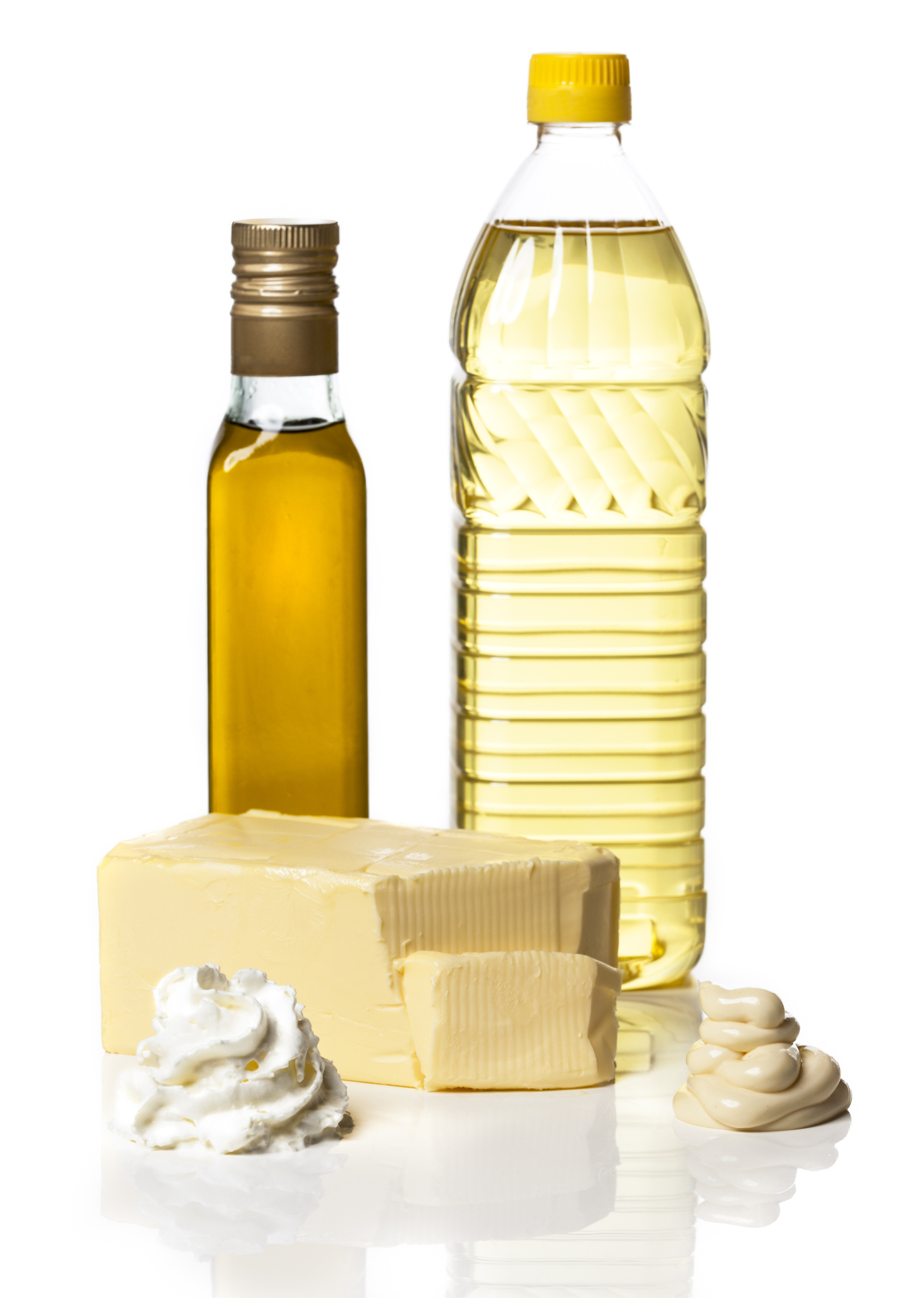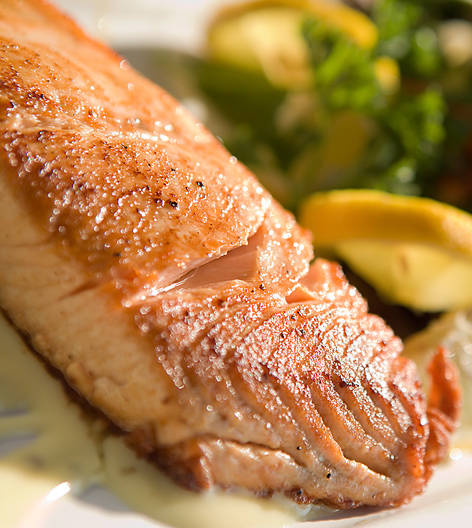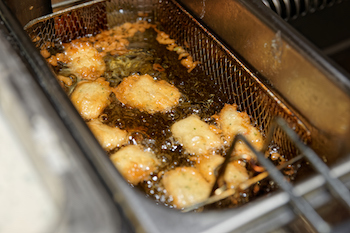Stay Informed
Popular Articles
- Hiatal Hernia: Hidden Cause of Chronic Illness
- Small Intestinal Bacterial Overgrowth (SIBO)
- Applied Lymphology: Unlocking the Secret to Pain Relief
- An Introduction to Constitutional Iridology
- The Low Down on Liver Detoxification
- An Energetic and Emotional Approach to Cancer
- Fat Facts
- Marrow in the Bones
- Blood Type and Nutrition
- Cardiac Herbs: Beyond Hawthorn
Quick Search
The School of Modern Herbal Medicine




The Omega Factor
- 7/16/2008
- Categorized in: Nutrition
 This is part two of a four-part article.
This is part two of a four-part article.
There are many different fatty acids. The difference is based on which carbon molecule “shoppers” aren't holding hydrogen “bags.” In other words, the location of the double bonds, where hydrogen molecules are missing, determines the nature of each fatty acid. All fatty acids can be burned for fuel, but the body needs certain configurations of unsaturated fatty acids for specific purposes.
Unsaturated fatty acids fall into three basic categories: Omega-3, Omega-6 and Omega-9. The number following the “Omega” is derived by counting the position of the first set of double bonds where hydrogen molecules are missing.
Omega-9 fatty acids aren't considered essential (although the body needs them), because the body can make them from Omega-3 and Omega-6 fatty acids (if they are present in the diet). Oleic acid is the basic Omega-9 essential fatty acid and is found in olive oil (virgin or extra virgin), olives, avocados, peanuts, sesame oil, and nuts like almonds, pecans pistachios, cashews, macadamias, etc. Monounsaturated oleic acid lowers heart attack risk and arteriosclerosis, and aids in cancer prevention.
The polyunsaturated fatty acids are considered essential because the body can't manufacture them. The basic Omega-6 essential fatty acid (EFA) is linoleic acid. The most common form of this is alpha-linoleic acid, which the body converts to gamma linoleic acid (GLA). Linoleic acid is found in all vegetable oils and many other foods.
Most Americans get plenty of Omega-6 in their diets, but many people have problems converting it to GLA because their diets are rich in sugar, alcohol, and transfatty acids (which we'll discuss shortly). Smoking, stress, viral infections, diabetes, and even the aging process can also inhibit this conversion process. This is why supplementation with GLA can sometimes be helpful.
On the other hand, most Americans get too little Omega-3 EFA (linoleic acid). The principle form of Omega-3, alpha linolenic acid (ALA) will convert into eicosapentaenoic acid (EPA), and then into docosahexaenoic acid (DHA) in a healthy body. EPA in combination with GLA (from Omega-6) is used to make eicosanoids that mediate inflammation, improve immune response and otherwise promote good health. Without the EPA from Omega-6 the EPA tends to be converted to eicosanoids that lower immune response, increase inflammation, raise blood pressure and have other undesirable effects.
 Deficiencies of Omega-3 EFA have been linked to decreased mental abilities, loss of memory, learning disabilities like ADHD, PMS problems, tingling sensations in the nerves, poor vision, the increased tendency to form blood clots, reduced immune activity, high blood pressure, an increase in inflammatory disorders like arthritis, and cardiovascular disease. Since the vast majority of North Americans are deficient in Omega-3 EFA this provides a clue as to why these health problems are so common.
Deficiencies of Omega-3 EFA have been linked to decreased mental abilities, loss of memory, learning disabilities like ADHD, PMS problems, tingling sensations in the nerves, poor vision, the increased tendency to form blood clots, reduced immune activity, high blood pressure, an increase in inflammatory disorders like arthritis, and cardiovascular disease. Since the vast majority of North Americans are deficient in Omega-3 EFA this provides a clue as to why these health problems are so common.
Omega-3 is found in flaxseed oil, flaxseeds, hemp seeds, walnuts, pumpkin seeds, Brazil nuts, sesame seeds, avocados, some dark green leafy vegetables (kale, mustard greens, collard greens, etc.), deep ocean fish (mackerel, sardines, anchovies, albacore tuna, etc.) and wild salmon (but not farm-raised salmon).
Good and Bad Fats
When it comes to identifying the ”good guys” and the “bad guys” in the movies, it's pretty clear that the one's wearing the “white hats” are usually the good guys, while the villains are the ones with the “black hats.” In the world of fats, it isn't so easy. There's been a lot of confusion on the subject.
Unsaturated fats (polyunsaturated or monounsaturated, depending on who you read) are considered to be the “white hats” of the fat world. However, polyunsaturated fats go rancid quite easily, and because they are liquid at room temperature, they don't work for certain cooking applications.
Thus, hydrogenation of fats was born. Hydrogenation is a process that is used to add hydrogen molecules to some of those carbon “shoppers” who don't have a hydrogen “shopping bag” in their hand.
Partially Hydrogenated
If an oil were completely hydrogenated, then we would simply have saturated fat (steric acid), but the process is halted when the fat reaches the desired state of “hardness.” Most commercial cooking oils, and all margarine and shortening products, are composed of partially hydrogenated fats. (To say that another way, they are partially saturated fats.) The problem is that in nature these hydrogen molecules are added in a controlled way, while in the hydrogenation process they are added randomly. This results in many unnatural compounds, which scientists are still studying. However, the growing condenses is that many of these compounds are harmful to our health.
That's bad enough, but heating any oil above 300 degrees causes fatty acids to start to become mutogenic (cancer causing). At 320 degrees transfatty acids begin to form and at 392 degrees a lot of transfatty acids are formed. Transfatty acids (TFAs) are an alteration of the molecular structure of the fatty acid which makes it difficult for the body to utilize it properly.
Transfatty Acids & Refined Oils
 TFAs are now considered a major cause of cardiovascular disease. They are also implicated in diabetes, cancer and inflammatory diseases like arthritis. Enough evidence has accumulated that TFAs are harmful to human health that the FDA now requires labels to provide information on transfatty acid content in foods.
TFAs are now considered a major cause of cardiovascular disease. They are also implicated in diabetes, cancer and inflammatory diseases like arthritis. Enough evidence has accumulated that TFAs are harmful to human health that the FDA now requires labels to provide information on transfatty acid content in foods.
Processed oils aren't bad just because they contain transfatty acids, either. Fresh oils pressed from nuts and seeds contain vitamins, minerals and other nutrients. Because these other nutrients decrease shelf life, they are “refined” out of processed oils, just like nutrients are “refined” out of sugar and white flour.
The extraction process itself can involve heat and/or chemicals which alter fats, but that's just the beginning. Hydrogenation(as we've just seen) partially saturates these fats, but creates transfatty acids and unnatural forms of fatty acids.
The alteration of the natural oil continues as processed oils are “de-gummed” to remove phosopholipid like lecithin and minerals like iron, copper, calcium and magnesium.
Sodium hydroxide (found in Drano) is added to remove free fatty acids (fatty acids which are not attached to glycerine molecules). This removes more minerals and phospholipids. Oils are then bleached and deodorized to remove beta-carotene, aromatic oils (which give natural oils flavor and odor), and any remaining free fatty acids. These processes involve heat, which of course, adds more transfatty acids.
The bottom line is a very shelf-stable, tasteless oil product, that cooks without smoking, but has lost most of its nutritional value. As a result we obtain very few EFAs from processed oils. This is why some form of supplementation is needed by many people.
This article continues with part three, Fatty Acid Supplements.
